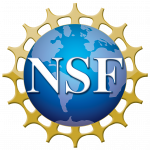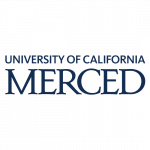Graduate Student Academic Defenses
Dolk, Alex. (MS/MPA 2021). Where There’s Fire, There’s Smoke: Examining Population Exposure to PM2.5 from Prescribed Burning in Northeastern Washington. Concurrent Master’s Thesis. Evans School of Public Policy and Governance, School of Environmental and Forest Sciences, University of Washington, Seattle, WA.
Podschwit, Harry. (PhD, 2021). Accounting for model uncertainties in statistical forecasts of wildfire parameters. Doctoral Dissertation. School of Environmental And Forest Sciences, University of Washington, Seattle, WA.
Stephens, Emily. (MPA, 2022). Winner of the Environmental Policy & Management Research Prize, All Lands, All Plans: Regional and Forest-Level Planning and Coordination in Eastern Washington Forests. Masters Degree Capstone, Evans School of Public Policy and Governance, University of Washington.
Higinbotham, Marie (MPA 2022). Incorporating Equity into Capital Planning and Decision-Making. Masters Degree Capstone. Evans School of Public Policy and Governance, University of Washington, Seattle, WA.
Goldgeier, Brian (MPA 2023). Winner of Masters Capstone Justice and Diversity Research Prize, Evans School of Public Policy and Governance, University of Washington, Seattle, WA.
Skinner, Haley (MPA 2023). Winner of Masters Capstone International Development Research Prize. Evans School of Public Policy and Governance, University of Washington, Seattle, WA.
Perkins, Sam; Pierce, Evan; Alkhars, Mohamed; Lu, David (MPA 2023). Masters Team Capstone Project with USDA Forest Service on Addressing Disparities in Wildland Firefighter Compensation. Evans School of Public Policy and Governance, University of Washington, Seattle, WA.
Bradbury, Nickolas (MPA, 2025) Masters Team Capstone Project on Decarbonizing Washington’s Industry Sector: Proposed Actions for Washington’s Comprehensive Climate Action Plan. June 2025. University of Washington, Seattle WA.
Conference Presentations
“Risk Factors and Wildfire Mitigation Planning by Public Utilities in Washington State.” Washington State Department of Commerce Energy Safety and Resilience Summit. (Nickolas Bradbury, Alison Cullen) March 10, 2025.
“A Quantitative Analysis of the Relationship Between Firefighter Availability and Prescribed Burning in the Okanogan-Wenatchee National Forest.” (Anna Kenig-Ziesler, Alison Cullen, Erin Belval). US Forest Service’s Rocky Mountain Research Station Wildfire Risk Management Science Team. 18 February 2025.
“Prescribed Fire Implementation and Firefighter Availability in the Okanogan-Wenatchee National Forest.” (Alison Cullen, Anna Kenig-Ziesler, Erin Belval). Society for Risk Analysis Annual Meeting, December 2024, Austin TX.
“Wildfire – Risk, Community, Communication” (symposium chair Alison Cullen). Society for Risk Analysis Annual Meeting, December 2024, Austin TX.
“Prescribed Fire Implementation and Firefighter Availability in the Okanogan-Wenatchee National Forest.” (Anna Kenig-Ziesler, Alison Cullen, Erin Belval). American Meteorological Society Fire and Forest Meteorology Symposium, Denver, CO. 14 May 2025.
“Synoptic Weather Patterns Associated with Extreme Fire Spread in the Pacific Northwest.” (Reed Humphrey). American Meteorological Society Fire and Forest Meteorology Symposium, May 2025, Denver CO.
“Outlook for the 2025 California fire season” (John Abatzoglou). Fire Resilience Seminar, Merced, CA, April 2025
“Climate change has increased the odds of extreme regional forest fire years globally” (John Abatzoglou, Crystal Kolden, Alison Cullen, Mojtaba Sadegh, Marco Turco, Matthew Jones). European Geophysical Union annual meeting, Vienna, Austria, May 2025
“Heatwaves enable wildfire activity in the western United States” (Dmitri Kalashnikov, John Abatzoglou Emily Williams; Cong Yin; Madhulika Gurazada; Ashwin Thomas; Precious Ebiendele; Mukesh Kumar). American Meteorological Society Fire and Forest Meteorology Symposium, Denver, CO. 14 May 2025.
“Modeling the drivers of lightning ignitions across the western United States” (Ashwin Thomas, John Abatzoglou). American Meteorological Society Fire and Forest Meteorology Symposium, Denver, CO. 14 May 2025.
“Critical Thresholds: Discontinuities in the Determinants of Wildfire Suppression Resource Use.” (Reed Humphrey, Erin Belval, Alison Cullen). Society for Risk Analysis Annual Meeting, December 2024, Austin TX.
“The expanding risks of extreme wildfires” (John Abatzoglou). Geological Society of America annual conference, Anaheim, CA, September 2024
“Invited briefing of White House Counsel for Environmental Quality on old forest conservation.” (Susan Prichard) July 18, 2024.
“Converging on the Climate Driven Wildfire Risks of the Wildland Urban Interface”. (Lee Kessenich, Melissa Bukovsky, Rachel McCrary, Reed Humphrey, Alison Cullen, John Abatzoglou: AGU24, Washington D.C.. Oral Presentation. December 13th, 2024.
“Wildland Fuels in Three Dimensions – from point clouds to improved estimates of combustible biomass, fire behavior, and fire-vegetation feedbacks.” Susan J. Prichard, Eric Rowell, Russ Parsons, Andrew Hudak. NASA Wildland Fire Management special session. AGU Conference, Washington DC. December 2024.
“Projected changes in inter-regional simultaneity of megafires in the Western US based on NA-CORDEX regional climate simulations.” (Seth McGinnis, Lee Kessenich, Linda Mearns, Melissa Bukovsky, Alison Cullen). 2023 Wildfire Risk Management Science Weekly Series, Rocky Mountain Research Station, US Forest Service. Virtual, July 27, 2023.
“Co-producing Actionable Climate Science for Wildland Fire Operations and Policy.” (Lee Kessenich, Melissa Bukovsky, Seth McGinnis, Linda Mearns, Alison Cullen, John Abatzoglou). 28th Annual CESM Workshop, Boulder, CO. 12 June 2023.
“Reimagining fire-adapted forests: place-based adaptation strategies for western landscapes” (Susan Prichard) Opening plenary talk for the Cross-boundary Workshop. Southwest Chapter for the Society for Ecological Restoration. Fort Collins, CO. 2 May 2023.
“A Multi-Index Examination of Future Fire Season Length and Severity over the United States.” (Lee Kessenich, Melissa Bukovsky, Seth McGinnis, Linda Mearns, John Abatzoglou, Alison Cullen). AMS 14th Fire and Fire Meteorology Symposium, virtual, 3 May 2023.
“Fire Weather Forecasting in the Pacific Northwest using 500mb Map Types.” (Reed Humphrey, John Saltenberger, John Abatzoglou, and Alison Cullen). AMS Fire and Forest Meteorology Symposium, Minneapolis MN, 4 May 2023.
” A Multi-Index Examination of Future Fire Season Length and Severity over the United States” (Melissa Bukovsky, Lee Kessenich, Seth McGinnis, Linda Mearns, John Abatzoglou, and Alison Cullen) EGU General Assembly, Vienna, Austria, April 2023.
“Projected Changes in Inter-Regional Simultaneity of Megafires in the Western US Based on NA-CORDEX Regional Climate Simulations” (Seth McGinnis, Lee Kessenich, Linda Mearns, Melissa S Bukovsky, Alison Cullen). AMS Annual Meeting, Denver, CO. January 2023.
“Co-producing Actionable Climate Science for Wildland Fire Operations and Policy.” (Lee Kessenich, Melissa Bukovsky, Seth McGinnis, Linda Mearns, Alison Cullen, John Abatzoglou). AMS Annual Meeting, Denver, CO. January 2023.
“Climate change adaptation and proactive fuel reduction treatments.” (Susan Prichard) Wildfire Resilience Summit, Jackson, WY. 28 September 2022.
“Upper Wenatchee Pilot Project Workshop” (Haley Skinner, Susan Prichard, Alison Cullen), University of Washington (online) 15 November 2022.
“Projected Changes in Inter-Regional Simultaneity of Megafires in the Western US Based on NA-CORDEX Regional Climate Simulations” (Seth McGinnis, Lee Kessenich, Linda Mearns, Melissa S Bukovsky, Alison Cullen). AGU Fall Meeting, Chicago IL. December 2022.
“A Multi-Index Examination of Future Fire Season Length and Severity Over the United States.” (Melissa S Bukovsky, Lee Kessenich, Seth McGinnis, Linda Mearns, John Abatzoglou, Alison Cullen). AGU Fall Meeting, Chicago, IL. 16 Dec 2022.
“International Cooperation for Managing Wildfire Risk” (Sunniva Bloem, Alison Cullen, Linda Mearns, John Abatzoglou), Society for Risk Analysis, Annual Meeting, Tampa FL, December 2022.
“Fire Weather Forecasting in the Pacific Northwest” (Reed Humphrey, John Saltenberger, John Abatzoglou, Seth McGinnis, Alison Cullen) Society for Risk Analysis, Annual Meeting, Tampa FL, December 2022.
“Risk Management through Megafire Response” (Alison Cullen, Erin Belval, Haley Skinner, Brian Goldgeier, Sunniva Bloem, John Abatzoglou), Society for Risk Analysis, Annual Meeting, Tampa FL, December 2022.
“Growing Convergence Research: Co-producing Climate Projection Information for Managing Risk from Simultaneous Wildfires” (Alison Cullen, Reed Humphrey, Lee Kessenich, Seth McGinnis, John Abatzoglou), Society for Risk Analysis, Annual Meeting, Tampa FL, December 2022.
“Drivers of lightning-ignition efficiency in California forests.” (Ashwin Thomas). 2022 Yosemite Hydroclimate Meeting, Yosemite National Park. October 13, 2022.
“Taming fire: panel on climate change and wildfires” (Don Hankins, Susan Prichard) Aspen Ideas Festival, Aspen, CO. June 29, 2022.
“Western wildfires – adapting to a future with more fire” (Susan Prichard) University of Washington Botanical Gardens Plenary, March 2, 2022. [online]
“Where there’s fire, there’s smoke: Examining Population Exposure to PM2.5 from Prescribed Burning in Northeastern Washington.” (Ernesto Alvarado, Alison Cullen, Alex Dolk). International Association of Wildland Fire & Climate Conference, Pasadena, CA. May 2022.
“Future changes in Simultaneous Megafire projected by NA-CORDEX” (Melissa Bukovsky) European Geophysical Union. Vienna. May 2022
“Drivers of lightning-ignition efficiency in California forests.” (Ashwin Thomas). International Association of Wildland Fire Conference: Fire & Climate 2022, Pasadena, CA. May 2022.
“Multimodel Uncertainty in Projected Changes of Simultaneous Megafires in the Great Basin Based on NA-CORDEX Regional Climate Simulations.” (Seth McGinnis, Lee Kessenich, Harry Podschwit, Linda Mearns, Melissa Bukovsky, and Alison Cullen). AGU Fall Meeting, New Orleans LA. December 2021.
“Managing Future Fire Risk – an NSF Growing Convergence Research Project.” (Alison Cullen). Society for Risk Analysis 2021 Annual Meeting. December 2021.
“The role of international resource sharing arrangements in wildfire risk management in the face of climate change.” (Sunniva Bloem). Society for Risk Analysis 2021 Annual Meeting. December 2021.
“Symposium: Managing and Reducing the Risk of wildfire through Response and Fuel Treatment.” (Alison Cullen). Society for Risk Analysis 2021 Annual Meeting. December 2021.
“Projected Effects of Climate Change on Simultaneous North American Megafires Based on NA-CORDEX Regional Climate Simulations.” (Seth McGinnis, Harry Podschwit, Lee Kessenich, Linda Mearns, and Alison Cullen) GC081-07, 2020 Fall Meeting, American Geophysical Union, December 2020 https://agu.confex.com/agu/fm20/meetingapp.cgi/Paper/687152
“Managing Future Risk of Increasing Simultaneous Megafires” (Alison Cullen, Harry Podschwit, Linda Mearns, John Abatzoglou, Seth McGinnis, Melissa Bukovsky, Susan Prichard) Society for Risk Analysis 2020 Annual Meeting, December 2020.
Workshops
UW Evans School Capstone Presentation and Workshop May 2023
Upper Wenatchee Pilot Project Decision Analysis, Stakeholder Workshop, Autumn 2022.
NSF Growing Convergence Research Managing Future Risk of Simultaneous Wildfire. Stakeholder Workshop. April 2021.
NSF Growing Convergence Research Managing Future Risk of Simultaneous Wildfire.” Stakeholder Workshop. June 2021.
Convergence Workshop on Simultaneous Fires, Stakeholder Focus Group, Association for Fire Ecology. November 2021.
Webinars, Seminars, and Podcasts
“The expanding risks of extreme wildfires” (John Abatzoglou). National Association for Business Economics, Webinar, February 2025
FFERAL (Forest & Fire Ecology Random Lectures) Series: Lessons from first-entry burns and reburns: from novel fire exclusion to fire-adapted landscapes (Susan Prichard). University of California Davis. April 2025.
“The future of wildland fuels is 3D.” (Susan Prichard) Fabulous Fuels Fridays, USFS Washington Office spring webinar series. April 2025.
“Braiding Indigenous Knowledge and Western Science to Adapt Forests to Climate Change” (Cristina Eisenberg and Susan Prichard) Yale Forestry Summit. October 2024.
“Rekindling our Relationship with Wildfire” Climate One Podcast(Susan Prichard) June 7, 2024
“Invited briefing to White House staff on climate change and wildfires” (Susan Prichard). June 29, 2023
“Climate and wildfires in western North America: a case for proactive management” (Susan Prichard) Environmental Science Speaker Series, Western Washington University. May 18, 2023.
“GCR 2023: Lessons from the Field” (Alison Cullen) NSF Growing Convergence Research Program, April 6 2023.
“Overview of the 10 Common Questions paper” (Susan Prichard) Meeting with Okanogan Wenatchee National Forest Late Successional Reserve Working Group. April 4, 2023.
“Adapting western forests to climate change and wildfires” (Susan Prichard) Southwest Fire Science Consortium Webinar. January 31, 2023.
“Public webinar: Adapting western forests to climate change and wildfires.” (Susan Prichard and Keala Hagmann) September 9, 2022.
“CALFIRE executives webinar: Adapting western forests to climate change and wildfires.” (Susan Prichard and Keala Hagmann) September 1, 2022.
“Burning Issues: Wildfires” Podcast. (Alison Cullen). Burning Issues. University of Chicago. June 2022.
“Western wildfires – adapting to a future with more fire.” (Susan Prichard) Rotary District 5060 Environmental Sustainability Committee. June 16, 2022. [online]
“Landscape fuel treatments and wildland fire management strategies within recent large fire events of north-central Washington State”(Susan Prichard) Missoula Fire Science Lecture Series. April 28, 2022. [online]
“Landscape fuel treatments and wildland fire management strategies within recent large fire events” (Prichard, S., Povak, N., Lemons, R., and Griffey, V.) Northwest Fire Science Consortium Webinar. November 18, 2021.
“Climate change and the risk of Western fire activity.” (John Abatzoglou). IBHS Disaster Dynamics Academy, March 2022.
“Climate Change and Simultaneous Megafires in the Western US.” (Seth McGinnis). Presentation, CGD Seminar, Boulder CO, 1 March 2022. Online: https://www.youtube.com/watch?v=tt9HnbMjv9o.
“Climate change adaptation for western forests, watersheds, and communities.” (Susan Prichard). FEMA Region 10 Regional Interagency Steering Committee (RISC) Meeting. March 2022.
“Climate change impacts on demand for emergency resources.” (Reed Humphrey). FEMA Region 10 Regional Interagency Steering Committee (RISC) Meeting. March 2022.
“Western wildfires – adapting to a future with more fire.” (Susan Prichard). University of Washington Botanical Gardens, Seattle, WA, March 2, 2022.
“Common questions about adaptive forest management.” (Susan Prichard). Guest lecture, Environmental and Resource Management 101: Forests and Society. February 2022.
“Managing Future Risk of Increasing Simultaneous Megafires” (Melissa Bukovsky), National Center for Atmospheric Research, Research Applications Lab, December 2021.
“Landscape fuel treatments and wildland fire management strategies within recent large fire events.” (Susan Prichard, N Povak, R Lemons, V Griffey). Northwest Fire Science Consortium Webinar. November 18, 2021.
“Climate driven fire hazards: knowledge and limitations.” (John Abatzoglou). Bureau of Meteorology Annual Conference, Melbourne Australia (remote), November 2021.
“Common questions about adaptive forest management.” (Susan Prichard). Society of American Foresters, Washington Chapter. Webinar, November 11, 2021.
“Wildfire Smoke Engagement Workshop: Fire Ecology.” (Susan Prichard). SNAPP wildfire smoke engagement workshop Okanogan, WA, November 8, 2021.
“Common questions about adaptive forest management.” (Susan Prichard, P Hessburg, K Hagmann). UW School of Environmental and Forest Sciences Fall Seminar Series, October 28, 2021.
“The rise of fire in the Western United States: drives, impacts, and solutions” (John Abatzoglou). National Academies of Engineers, Sep 2021
“Climate Challenges for Wildland Fire Management” (John Abatzoglou). University of California Wildfire Symposium Series, Aug 2021
Colorado Congressional Forum on Wildfire and Extreme Climate, Rep. Joe Neguse, Linda Mearns, discussant, Highlands Institute Boulder, August 2021.
“Compound Extremes Drive the Western Oregon Wildfires of September 2020” (John Abatzoglou) Pacific Northwest Drought Early Warning System webinar series, June 2021.
“Wildfire Risk Management and Decision Analytic Approaches” (Alison Cullen) Research Highlights, Evans School, University of Washington, Seattle, WA, March 19, 2021.
“Climate Change Impacts in Colorado” (Melissa Bukovsky) Protect Our Winters, Colorado Chapter. January 2021.
“Climate information for fire management in SW Forests” (John Abatzoglou) Fire Science & Management in an Uncertain Future webinar series, December 2020.
“Wildfires and Climate Change in the Pacific Northwest.” (Susan Prichard) Association of Women in Science – Seattle Chapter. December 2020.
“Climate change and the risk of Western fire activity, Wildfires, Litigation, and What Science Can Tell Us” (John Abatzoglou) National Judicial College webinar, October 2020.
“Fuel Treatments and Megafires: lessons from the large fires in north-central WA” (Susan Prichard) University of California Fire Science Seminar Series. October 2020.
“Why are wildfires increasing in the Pacific Northwest?” (Susan Prichard) Washington on Fire Seminar, Washington State University Graduate and Professional Student Science Policy Initiative. October 2020.
“Wildfire Risk Management: Future Trends and Impact on Decision Making” (Alison Cullen) Cascadia Wildfire and Urban Smoke Webinar, Seattle, WA, 2020.



